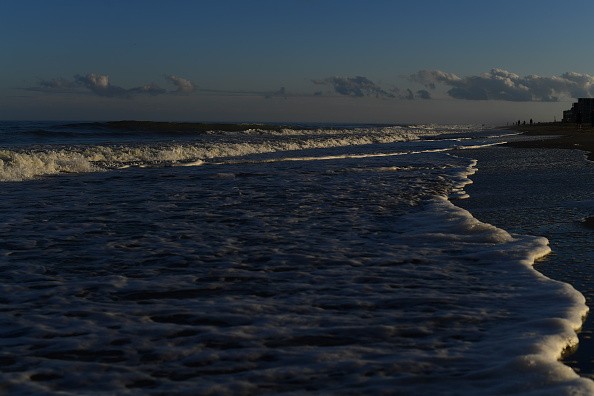It's not just on land where heat waves occur; they can also happen underwater.
New research in Frontiers in Marine Science uncovers recent and future trends in marine heat waves within the largest estuary in the nation, with catastrophic consequences for marine creatures and the coastal economy of the Chesapeake Bay, as well as other affected shallow-water ecosystems.

Cumulative Intensity of Marine Heatwaves
There were significant upward trends in the frequency and annual cumulative intensity of marine heat waves within the Chesapeake Bay, according to Drs. Piero Mazzini and Cassia Pianca, the study's authors from William & Mary's Virginia Institute of Marine Science.
The two researchers drew their conclusions from long-term water temperature records collected at six locations along the Bay's 200-mile length, ranging in duration from 26 to 35 years, according to Phys.org.
A marine heat wave is any period of five or more consecutive days in which the ocean temperature exceeds 90% of the temperature measured in the same location and time period in previous years. It was determined that the frequency, severity, duration, and cumulative temperature stress of heat waves in the Bay were all examined.
Averaging 5.4°F (3°C) in average heat and a maximum temperature of 14.4°F (8°C) above the climate norm, Mazzini and Pianca found that the Chesapeake Bay experienced two 11-day marine heat waves per year between 1986 and 2020.
According to the formula, this is the same as the cooling degree days that are used to calculate the amount of energy needed to keep people in their homes comfortable in hot climates, with an annual average intensity of 130 degrees Fahrenheit (72 degrees Celsius).
Incredibly, the researchers discovered that the frequency of marine heat waves has increased dramatically over the previous decade, from 4-5 incidents per year prior to 6-8 events per year since 2010.
There will be an increase in the number of heat waves by 1.4 per decade over the next decade. Since 2010, there have only been a few years without a marine heat wave in the Bay waters, according to the study.
Also Read : Consequences of Climate Change: Kelp! Australia's Underwater Forest Wiped Out by Marine Heatwave
Future of the Bay
It's predicted that within 50 years, the Bay would suffer heat waves on a monthly basis, and by the end of the century will reach a semi-permanent heat-wave state, with excessive temperatures present for more than half of the year, if current trends continue.
There would be devastating effects on Bay ecosystems, including increased nutrient pollution, worsening conditions in low-oxygen "dead zones," increased algal blooms, stress or even death of bottom-dwelling communities, changes in species composition, and decreases in commercially important fisheries such as the striped bass, according to the authors.
Global warming will likely have similar effects on other shallow-water coastal systems across the world.
For the first time in this type of shallow coastal ecosystem, Mazzini and Pianca have investigated marine heat waves, despite multiple prior investigations into overall warming trends in estuaries (including the Chesapeake Bay).
Furthermore, the information they gleaned can be utilized to better forecast similar incidents in the future, which will help managers make more informed decisions.

What Events Could Lead to Bay Heat Waves?
Researchers Mazzini and Pianca investigated three possible triggers for these extreme events: the heating by the atmosphere, inflow of warm river water, and invasion of balmy saltwater in addition to the characteristics of Bay heat waves and how they might be changing over time.
To solve this mystery, researchers compared the timing of marine heat waves both inside and outside the Bay, hypothesizing that heat-wave episodes with comparable start and end dates are likely to share the same originator.
They used data from two ocean observation buoys, one near the opening of the Bay and another on the continental shelf, to study water temperatures outside the Bay.
Their findings demonstrate that marine heat waves occur at around the same time in both the Bay and the coastal seas that surround it.
There is a direct association between the frequency of marine heat waves and the long-term warming of Bay and coastal waters seen in other research. A pattern of heat waves starting in the Bay and spreading to the ocean or the other way around was not discovered.
For more news, updates about heat waves and similar topics don't forget to follow Nature World News!
© 2025 NatureWorldNews.com All rights reserved. Do not reproduce without permission.





